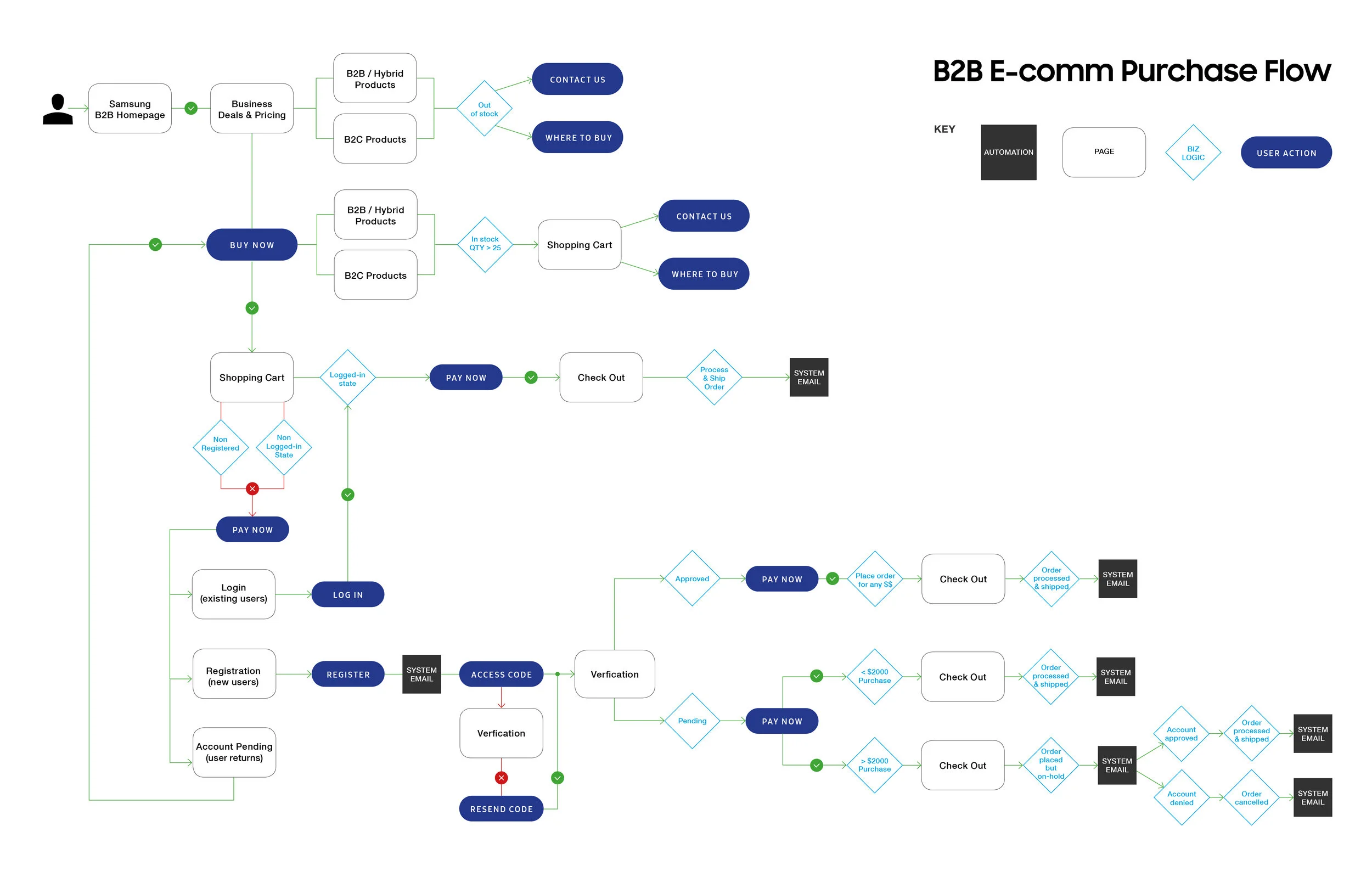Your Custom Text Here
Discipline: E-Comm Experience for Business Buyers
Responsibilities: UX Research, UX Strategy, UI & Micro Animation Design
This redesign is about unlocking Samsung B2B’s online business potential. Creating multiple purchase paths, and give users a unified commerce experience. Every change our organization makes to aid the digital transformation is also in pursuit of a better customer experience. Our key drivers of digital transformation among B2B organizations are profitability, customer satisfaction, and increased speed-to-market. In this UX case study, I will be sharing my detailed process and the reasoning behind the design decisions that I took to redesign an E-commerce website and increase the Samsung B2B site’s conversion rate.
Project Objective
Because more and more B2B buyers are turning to the experience of purchase directly online, Samsung B2B division sees the need to respond to this trend. Samsung’s B2B site hasn’t been doing well in terms of making enough sales due to many reasons. Now with a holistic business strategy and UX strategy, we can finally optimize the B2B site’s UX flow, fix existing UX issues in order to improve the conversion rate, clean up many of the visual clutter on the website to give B2B users a hasslefree site UX.
Information Gathering
The first step was to speak to our stakeholders, understand business capabilities, and what’s feasible in the back-end. Sketch out our intended purchase flow, understand the overall UX flow. How we can reduce friction, make users’ purchase journey more smooth. We also did a detailed site audit, along with tracking data which showed drop-off points and the most common issues reported to customer services, which allowed us to identify and prioritize areas of improvement.
User-Centric Experience
We conducted a group interview with 6 people, through empathy mapping we visualized user attitudes and behaviors, in order to help us align on a deep understanding of end-users. This process also reveals any holes in existing user data.
Rethink Users’ Purchase Flow
Business buyers are growing to expect more of a consumer-like experience when making purchases for their business. They often experience pain points during the eComm buying process. We are moving the login gate to a later stage of the overall buyer journey, allowing users to explore business offers, and comparing deals and prices. Enable features to level-set our platform as market-ready. The new business logic and buyer purchase flow empowers users to understand our program's benefits.
Develop Value Proposition
Offering more services and business solutions to serve different businesses and industries. Expand outreaching, enhance targeting, align messaging, elevate the company brand. In order to convert more users to register on our website, through member-specific business offers, and incentive programs to reward our registered users. Depends on business size, quantity discounts are available, as well as trade-in and financing.
Define User Scenario
Define and breakdown user cases to provide a seamless site experience when users trying to complete different tasks and achieve business goals. Focus on a user’s motivations, document the process by which the user might use the Samsung website to purchase.
Easy Access & Clear Navigation
Add access point in the main GNB and homepage so users can easily access or navigate the site on all devices.
Content Personalization
We are taking a new approach to customizing relationships with customers through personalized web content. In fact, the bulk of sales innovation is taking place in personalization. The expectations for a rich shopping experience are magnified in a B2B buying journey — the stakes and potential spend are much higher than in retail. Buyers who come from the retail industry would want to see content specific to that area. Based on prior interactions and predictive intelligence, personalization can pinpoint whether site visitors are in research mode or ready to buy.
Validation & Outcome
As the budget and scope didn’t allow for a dedicated A/B testing program, I approached employees in roles unrelated to eCommerce and within each brand’s target demographic during the course of the project, asking them to complete tasks using the prototypes, so that we could iterate and validate during the design process. After a few rounds of tests and tweaks, we finally built and launched the Sign-in/Sign-up Experience. We kept a close eye on the analytic reporting, and now we have the traffic to run split tests within statistical significance. The redesign is an on-going effort and collaboration for our B2B marketing team and our stakeholders. The optimized landing experience started rolling out on March 2019 onward. Year over year, our total revenue went up 70%, traffic is up by 43%, business opportunity per visit is up by 24% comparing to 2018.




